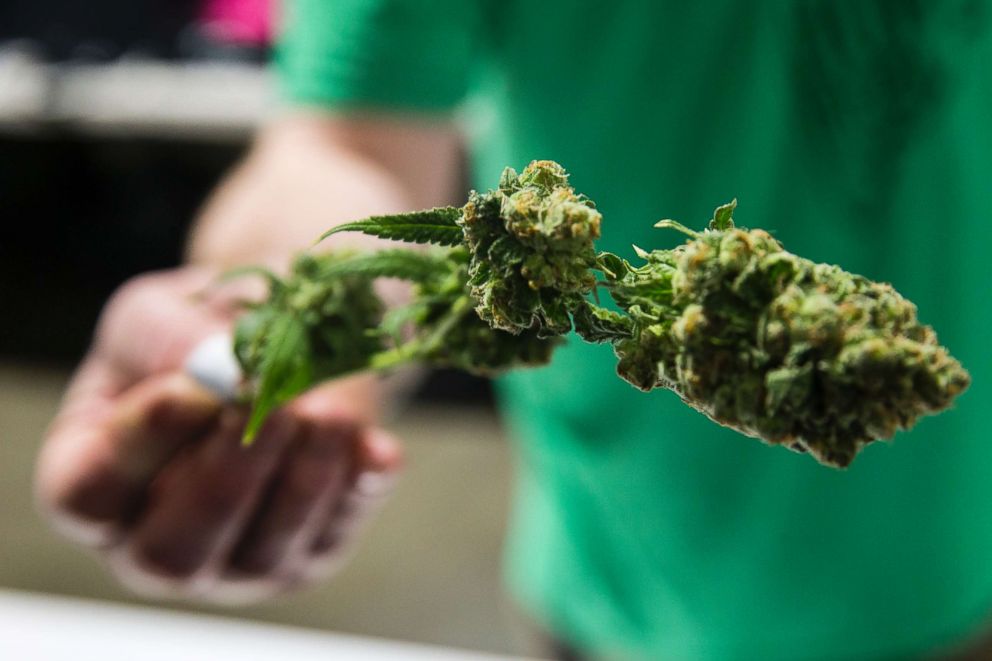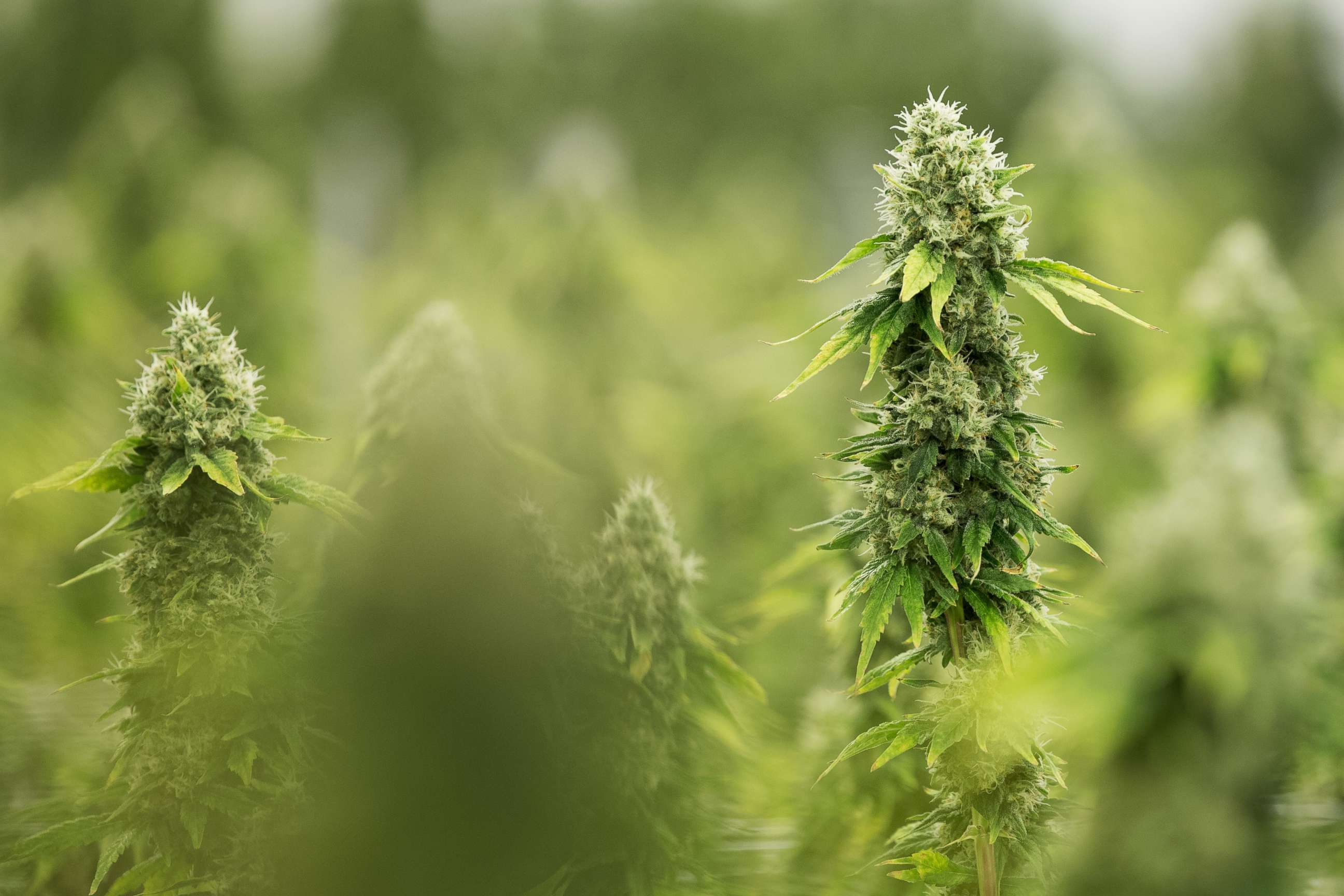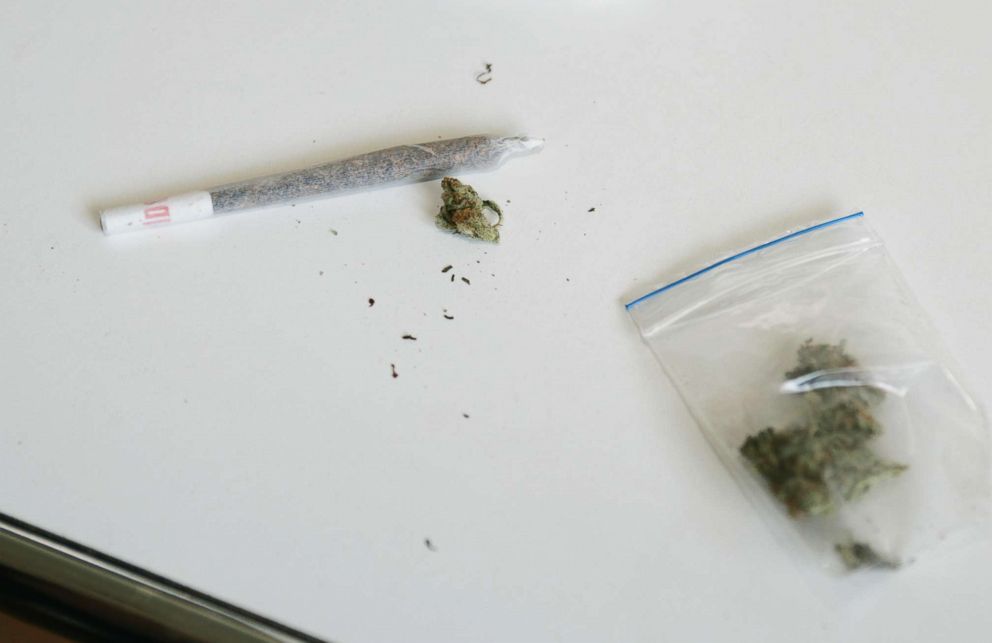Here are the people most likely to use marijuana based on their professions, study says
A survey released by the CDC showed who was used legal pot most in Colorado.
People can now buy marijuana for medical use in 29 states and the District of Columbia, and eight states have legalized marijuana for recreational use. Should employers be worried about safety hazards of marijuana use both on and off the job?
A survey released by the Centers for Disease and Control Prevention (CDC) Thursday may help inform employers in Colorado about marijuana use in their industry.
The Colorado Department of Public Health and Environment (CDPHE) analyzed data from the Behavioral Risk Factor Surveillance System (BRFSS) -- a phone survey about health habits in general -- and published a breakdown of marijuana use by industry and job.
Of the more than 10,000 workers surveyed, 14.6 percent answered yes to the question, “Did you use marijuana or hashish in the last 30 days?” They were not asked whether they used marijuana while on the job. Not surprisingly, use was more common in males and among young people, with nearly 30 percent of those in the 18- to 25-year-old age group reporting at least one use in 30 days.

Which profession smokes the most pot?
In the “accommodation and food services” industry, 30 percent of workers reported smoking pot at least once in the past month. Those in the job category “food preparation and serving” had the highest use at 32 percent of workers.
What other professions have a high proportion of marijuana users?
“Arts, design, entertainment, sports and media” came in second at 28 percent.
Marijuana use was reported by 19 to 21 percent of workers in “production,” “life, physical, and social science,” “sales and related,” and “installation, maintenance, and repair.”
What about people in high risk jobs?

While the study doesn’t reveal if anyone actually got high on the job, the researchers did take a special look at industries in “safety-sensitive occupations” in which workers are responsible for their own safety or the safety of others.
Those in construction, manufacturing, and agriculture industries all fell above the state average in percentage of workers reporting marijuana use. Notably, healthcare, utilities, or mining, oil, and gas all had less than 10 percent of their workers report marijuana use.
All three of these low-use industries are also those known to perform drug testing on employees.
The impact of marijuana use on job safety
This survey raises as many questions as it answers. The first and obvious, question: How many of these individuals have routinely or ever been under the influence of marijuana on the job? Similarly, just how frequently are they using?
We don’t have the answers. In the overall BRFSS population, employed and unemployed, just under half of the “within the month” marijuana users reported daily or near daily use. Of the remaining users, just about one-fourth of the population report using weekly, and the remaining one-fourth used only one to three times per month.
Since just over half of the total survey group was employed, it's impossible to say how many of the daily users are in the workforce. Another drawback to the survey, adults who had been employed within the past year -- even if they were not working at the time of the survey -- were included. It’s possible, then, that the time they were using pot and the time they were working in the reported profession had no overlap.
There's very limited evidence to suggest that marijuana use increases the risk of the workplace injury. However, there's certainly potential for problems if daily marijuana use is coupled with full-time work, particularly in safety-sensitive industries.
“The country is gradually becoming legalized with marijuana. We have highly anxious people," said Dr. Scott Krakower, a doctor of osteopathic medicine and assistant unit chief of psychiatry at Zucker Hillside Hospital in Glen Oaks, New York, with an interest in drug use and abuse. "I think that is going to lead to increased marijuana use in a lot of industries. I don’t know if we’re 100 percent prepared for that.”

It is well-established that in the short term, marijuana use is associated with slow reactions, low attention, poor coordination and impaired executive function, or higher-level thinking. At higher doses, with variance depending on a person's body mass index and tolerance level, it can cause hallucinations, paranoia, delusional beliefs and feel emotionally unresponsive. All of the above impact a person’s ability to function in the workplace.
“There’s no good clear timeline” for the effects of marijuana to leave the system, Krakower said.
“If employees are smoking marijuana on their breaks," he added. "It’s going to have a downward repercussion for the rest of the workday.”
Infrequent marijuana users, defined as those using less than weekly, will become impaired after smoking or ingesting 10 milligrams or more of THC, a finding which “applies to smoking, eating, or drinking the marijuana or marijuana product,” according to the CDPHE. They should wait at least six hours after smoking or eight hours after eating or drinking marijuana before entering the workplace or performing safety-sensitive activities. Most of these studies were performed with a dose of 18 to 35 milligrams of marijuana; a typical joint can contain more than that.
Drug screens are unreliable for evaluating whether someone is impaired from marijuana use, as they can remain positive for up to 30 days after last use in people who use marijuana frequently.
Public health officials and employers will benefit from more standardized reporting of circumstances related to marijuana use when it comes to safety events, from machinery accidents to car crashes.
Next steps: Workplace marijuana use policies
In states where marijuana use is legal, companies are currently left to their own judgment regarding workplace use.
Those with a policy that allows medicinal or recreational marijuana use during personal time will have difficulty interpreting a positive drug screen -- was the employee high at work or does the result reflect his or her use last weekend?
Experts have suggested implementing standardized cognitive testing rather than drug screens for those approved to use marijuana while employed -- or for those with a suspected marijuana-related workplace safety incident.
For those allowing medical marijuana use among employees, Krakower suggested that “companies should come up with a specific template that goes to the doctor. To justify how long ... for what ... what’s the frequency, duration [of use]. Will there be regular check-ins?”
Marijuana use is frequently linked to mental health issues
If an employee is using marijuana, Krakower suggests that employers dig further.
“Is there anxiety, is there ADHD, is there depression?" he said. "If marijuana is there, what else are we missing? Are we meeting [our employees'] needs?”
Federal law allows employers to prohibit employees from working under the influence of marijuana and may discipline employees who violate the prohibition without violating the Americans with Disabilities Act.
Several states have laws, however, which prohibit discrimination based on its use, citing evidence supporting the positive effects of marijuana on various health conditions. With widespread legalization, we will likely see publicized court cases surrounding these issues.
Now that marijuana is legal, Krakower said, “It’s a whole new world.”
Dr. Kelly Arps is a resident physician in internal medicine at Johns Hopkins Hospital. Kelly is working with the ABC News Medical Unit.


